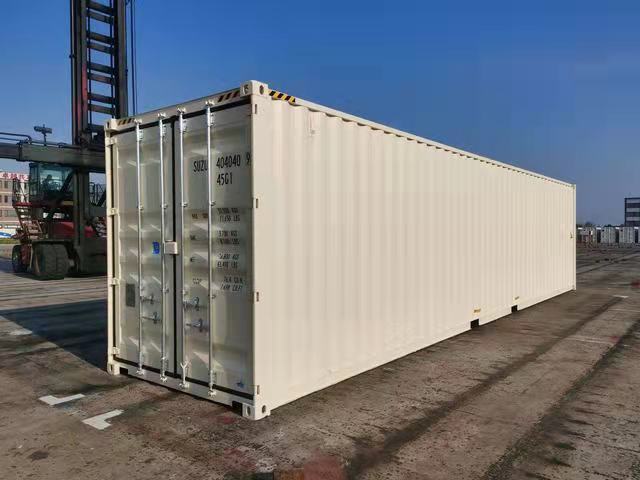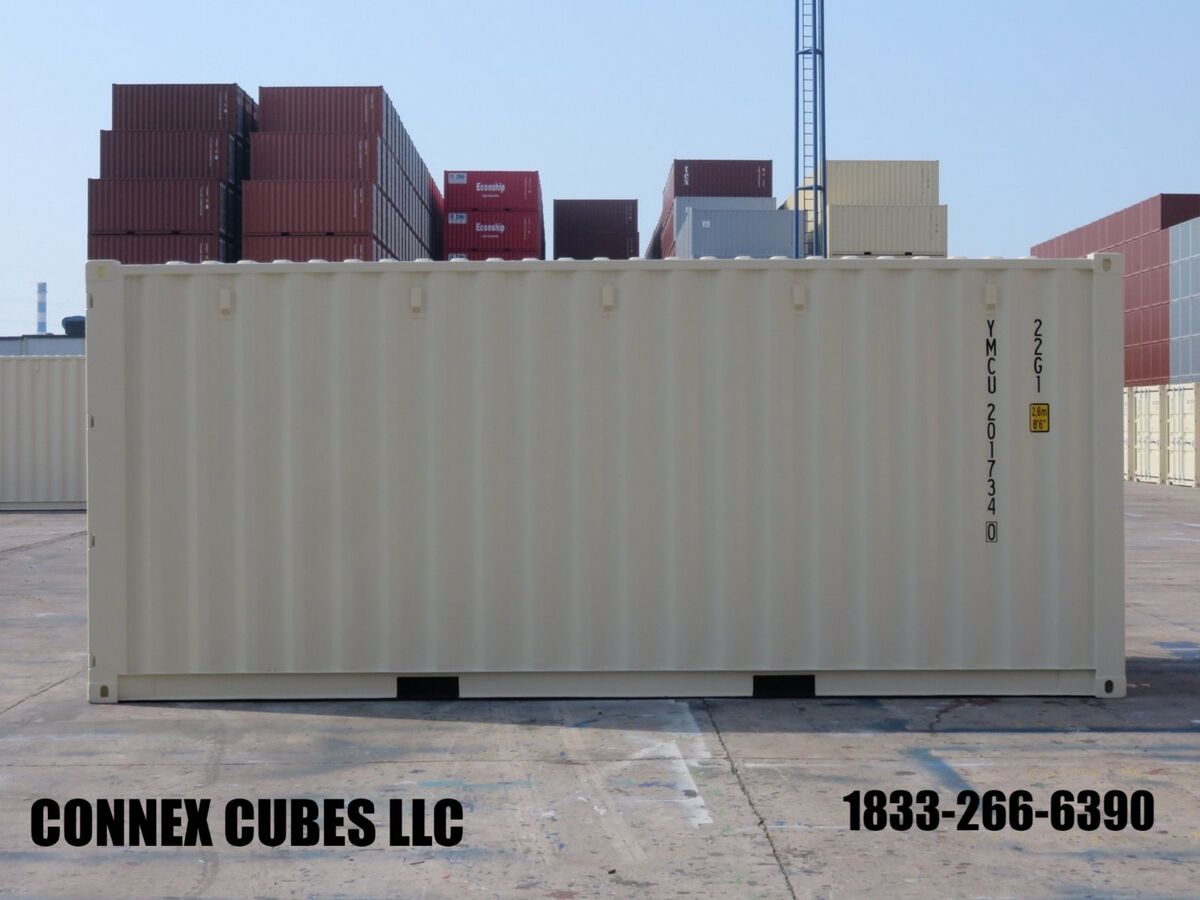The Ultimate Guide to Picking the Right Delivery Container for Your Needs
When it pertains to selecting the right shipping container, understanding your particular demands is vital. You'll want to take into consideration aspects like dimension, type, and product to guarantee you make the ideal option. From conventional dimensions to specialized choices, there's a whole lot to explore. And also, budgeting for both the container and any alterations can make a huge difference. Allow's break down the vital elements to aid you discover the best suitable for your requirements.
Understanding Delivery Container Sizes
When you're selecting a delivery container, understanding the numerous sizes readily available is important for making the ideal choice. Delivering containers normally can be found in common lengths of 20 and 40 feet, but you'll also locate other measurements. Recognizing the size you require depends on what you prepare to store or transport.If you're relocating smaller sized items, a 20-foot container could be ideal, while larger shipments frequently need a 40-foot container. Bear in mind that the height can likewise vary; high dice containers use additional vertical space, which can be valuable for taller goods - Buy New Shipping Container 40' x 8' x 9’6".Before choosing, measure your freight, and think about just how much space you'll need for loading and dumping. Always element in potential future demands-- choosing a somewhat larger container might conserve you hassle down the line. Inevitably, selecting the right dimension will boost effectiveness and guarantee your things are safe and secure during transportation
Kinds Of Shipping Containers Available
There are numerous sorts of delivery containers available, each developed for specific functions and cargo requirements. The conventional dry container is versatile, best for general cargo. If you're delivering subject to spoiling goods, consider a cooled container, which preserves a controlled temperature level. For oversized items, high dice containers provide extra height, accommodating taller loads.If you need to deliver hefty equipment or devices, flat shelf containers give a tough base without walls. On the other hand, open-top containers enable simple loading of tall freight, with a removable tarpaulin covering for security. If you're trying to find flexibility, take into consideration a retractable container that can be quickly saved when not in use.Lastly, specialized containers like container containers are made use of for fluids, while vented containers are designed for bulk cargo that requires air flow. Knowing your cargo kind will aid you choose the ideal container to satisfy your delivery needs successfully.
Material Considerations for Sturdiness
When choosing a delivery container, the product plays a crucial role in its sturdiness. You'll intend to consider the advantages of steel versus light weight aluminum, especially concerning deterioration resistance. Recognizing these aspects can assist you make a much more educated choice for your shipping needs.
Steel vs. Light weight aluminum Containers
Just how do you pick between steel and aluminum containers for your shipping needs? Begin by taking into consideration toughness. Steel containers are robust and offer outstanding toughness, making them optimal for hefty tons and extreme conditions. They stand up to damage from effects and are often more economical, which can be a significant factor for budget-conscious buyers.On the various other hand, aluminum containers are light-weight, which can conserve you on shipping prices. They're easier to navigate and are an excellent option if you need to move products regularly. Nevertheless, light weight aluminum is generally more costly and less robust than steel. Weigh your details needs carefully, including weight, expense, and the sort of freight you'll be shipping, to make the ideal choice for your scenario.
Corrosion Resistance Elements
Selecting the appropriate product doesn't simply involve weight and price; rust resistance plays a considerable duty in sturdiness. When choosing a delivery container, consider the setting it'll encounter. Steel containers, while strong, can corrosion if not appropriately dealt with. Try to find choices with protective coatings or galvanization to boost their life-span. Light weight aluminum, on the other hand, offers all-natural rust resistance, making it excellent for coastal locations or damp problems. It can be extra costly. Additionally, assess the container's usage-- if it'll be exposed to chemicals or rough weather, focus on materials that can withstand these problems. Purchasing a corrosion-resistant container currently can save you from costly fixings or replacements down the line. Pick sensibly for long-term benefits.
Adjustments and Modification Options
Delivering containers aren't just for moving items; they can be changed to fulfill your particular requirements through various modifications and personalization alternatives. You can transform a common container pop over here into a comfy workplace, a temporary retail shop, or perhaps a personal health club. The possibilities are almost endless.Think concerning adding home windows, insulation, or ventilation to boost comfort. You may likewise think about electric wiring, pipes, or even custom-made shelving to improve capability. If safety and security's an issue, strengthened locks can give tranquility of mind.For visual allure, you can paint the container or add a distinct layout to make it stand out. Don't ignore flooring alternatives-- whether you want sturdy plywood or something much more sophisticated, it can boost the space.Ultimately, tailoring your delivery container to fit your requirements can improve functionality and develop a distinct setting that reflects your design.
Evaluating Your Transportation Requirements
When it pertains to utilizing your modified shipping container, recognizing your transportation requires is essential. Start by determining what you'll be shipping-- whether it's hefty devices, retail items, or personal products. Each kind of freight has various needs relating to size, weight, and accessibility.Next, take into consideration the range and setting of transportation. Are you delivering in your area, country wide, or globally? This impacts the container's design and performance. If you're using trucks, ensure your container fits basic dimensions for very easy loading and unloading.Additionally, think of transportation conditions. Will your products need special security from weather condition or temperature level fluctuations? If so, you could require insulation or air flow attributes in your container.Lastly, analyze exactly how frequently you'll be carrying goods. Frequent deliveries may call for an extra durable and flexible container to fulfill recurring demands. By attending to these elements, you'll be well-prepared to choose the right delivery container for your demands.
Budgeting for Your Delivery Container
Setting an allocate your shipping container is crucial for guaranteeing a smooth buying process. Figure out how much you can manage to invest. Maintain in mind that prices can vary substantially based upon dimension, condition, and kind. New containers usually set you back more, but used ones can provide substantial savings.Next, consider any kind of additional prices you may incur, such as transport costs, distribution charges, and adjustments. If you intend to tailor the container, consider those expenses as well. Research various vendors to compare prices and discover the ideal deal that satisfies your needs.Don' t neglect to consist of any type of authorizations or regulations that may apply to your acquisition and use the container. By clearly describing your budget plan, you'll be much better prepared to make educated decisions, ensuring you obtain the right container without breaking the bank.
Maintenance and Look After Longevity
To ensure your delivery container lasts for several years, routine upkeep is key. Beginning by checking the outside for corrosion, damages, and damage. If you spot any type of issues, address them quickly to prevent further damage. Clean the container occasionally, both throughout, to eliminate dirt, particles, and moisture that can result in corrosion.Ensure the doors secure properly and lube the hinges to stay clear of corrosion and sticking. If you're utilizing the container for storage, take into consideration adding air flow to decrease humidity and mold and mildew development. For additional security, use a rust-inhibiting paint or sealant annually.If your container's located in a severe environment, like seaside locations, you might need to raise maintenance frequency. Watch on the floor covering, as well; any type of indicators of wear should be fixed right now. With these easy steps, you'll prolong the life of your delivery container substantially.
Regularly Asked Inquiries
Exactly how Do I Find a Reputable Shipping Container Supplier?
To discover a trusted shipping container provider, begin by researching on the internet evaluations, requesting for recommendations from close friends or market get in touches with, and contrasting rates. Constantly check their qualifications and assurance they supply high quality containers that satisfy your demands.

Can I Lease a Delivery Container Rather of Purchasing?
Yes, you can absolutely lease a delivery container rather of purchasing one. Several providers provide rental options, which can save you money and supply adaptability if you only need it for a short duration.
What Allows Are Needed for Container Positioning?

Are Shipping Containers Weatherproof and Ideal for Outdoor Storage?
Yes, delivering containers are typically weatherproof, created to endure rough conditions. Their durable construction keeps your items safe and secure and completely dry, making them ideal for outdoor storage. Simply guarantee appropriate ventilation to avoid moisture accumulation inside.
How Do I Move a Shipping Container As Soon As Acquired?
